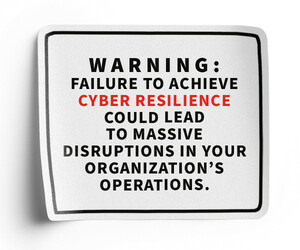How does a school district securely track the status, location and ownership of its thousands of devices at any given moment? It's a huge challenge, especially when budgets are tight and IT teams are small.
Beyond the device lifecycle challenges, not knowing the status of digital assets makes it more difficult to manage incident response plans. To solve these challenges, schools need centralized inventory management systems, which can go a long way toward minimizing a district’s cybersecurity risks.
“A comprehensive asset inventory enables IT and security teams to identify which systems may be affected in an attack in real time. This allows them to develop an incident response plan with the right priorities and contain threats before they spread,” says Doug Thompson, chief education architect and director of solutions engineering at Tanium. “Without clear asset visibility, even the best response plans can fall short, leading to data loss and extended recovery times.”
Cross-functional coordination is key for K–12 schools. Incident response planning should go hand in hand with asset management and should involve the IT team in addition to other stakeholders, such as the legal, communications and academic departments. This ensures that nothing slips through the cracks during an incident.
Click the banner below to explore ways to make your school more cyber resilient.
Thompson recommends centralizing resources, expertise and strategies across the school district. “A whole-of-state approach also connects schools with state and federal leaders, enabling collaboration through shared information, pooled resources and access to broader funding opportunities,” he says. This increases coordination and visibility, aligning tools and enhancing threat detection.
Conduct Device and Security Audits of K–12 Ed Tech
Even the best inventory management systems won’t be very useful “if you don’t actually audit stuff,” says Bill Loller, chief product officer at Incident IQ. He recommends schools to do an audit at least once a year “in that Thanksgiving and Christmas window. It’s a lot of downtime, and you’re going to be able to get your hands on your devices.” Midyear spot checks can further ensure accurate inventory.
These frequent assessments — including regular audits and tabletop exercises — can help K–12 IT teams identify and reduce potential vulnerabilities in their digital ecosystem, even in a rapidly changing environment.
A robust security audit should include risk assessments, compliance audits, vulnerability assessments, penetration testing, process audits, policy reviews, incident response evaluations and information privacy reviews, Thompson says.
Expert Resources for Understaffed K–12 Cybersecurity Teams
Despite challenges such as IT staffing, tackling asset management isn't something that can wait. One solution could be to contract with a managed security services provider that offers around-the-clock protection and scalable systems tailored to educational environments.
Another option: Hire a virtual CISO to get cybersecurity support on a temporary basis. “That gets you the expertise, and it helps with strategy and execution,” says Loller.
As Georgia Department of Education’s Chief Technology and Information Security Officer Nathan Miller said at CoSN 2025, “Inventory is probably the least sexy, most mundane and irritating piece, but it’s really important to know not just which products were affected [in a cyberattack] but how those products were interconnected.”
DON’T MISS: Asset-tracking technology helps schools save money and avoid risk.












